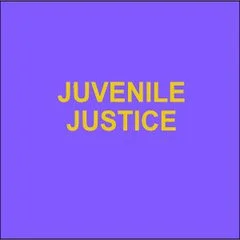By Nila Bala and Emily Mooney
The youth justice system in the United States is rightly shrinking. And yet, the historic disproportionality between white youth and youth of color in the system remains. Indeed, when it comes to the arrest rate of youth of color relative to that of white youth, the gap has actually widened over time. For this reason, more reform is needed to further limit youth involvement in the justice system overall and to ensure that those of all racial and ethnic backgrounds are held accountable in the most equitable manner possible. For this reason, Congress closed 2018 with the reauthorization of the Juvenile Justice Delinquency Prevention Act (JJDPA), a key piece of juvenile justice policy. One of its provisions guides states and localities to locate and address racial and ethnic disparities (RED) in the juvenile justice system, which according to the law, occur when: “Minority youth populations are involved at a decision point in the juvenile justice system at disproportionately higher rates than non-minority youth at that decision point.”5 Too often, the issue of addressing racial disproportionality in the juvenile justice system has become a partisan issue. But, the problem should concern us all, as it can directly affect the rule of law and procedural justice, and can undermine the efficacy of the system’s responses. Furthermore, disparities in how youth are treated at the beginning can compound into disparities further down the line, such as ultimate commitment to the juvenile justice system. And moreover, reforms to the juvenile justice system will not be meaningful unless we address the reasons youth of color are disproportionately involved in the system today and often face harsher outcomes. While RED can occur at many decision points in the system, a useful place to focus our attention is at the point of diversion. As shown by developmental research, many youth who make poor decisions today will naturally grow out of these patterns as they age. Given this reality and the potential negative effects of system involvement,8 diversion from the juvenile justice system altogether can be an effective solution both to reduce juvenile system involvement overall and to promote racial and ethnic equity. Indeed, even those who have committed more “serious” offenses can benefit from diversion.9 Accordingly, the present study will first consider diversion and its overall goals, and how—when best practices are followed—it can be an intervention that supports individual dignity, limited government and the preservation of community. It will then address the need to promote racial and ethnic equity and identify a few causes of disparities at the point of diversion. And finally, it concludes with policy solutions that aim to promote equity and the proper use of diversion.
R STREET POLICY STUDY NO. 178 July 2019
Washington, DC: R Street, 2019. 8p.



